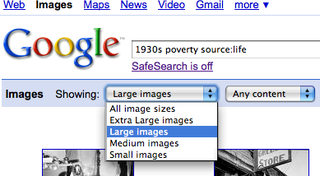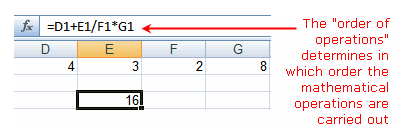Middle School Students Video – No Future Left Behind
Teaching with Historic Photographs: The Google LIFE Photo Archive
 For example here's one of the archive photos taken by Dorothea Lange in the Migrant Mother Series. It makes a great contrast to the iconic photo she took that day that is more commonly reproduced in textbooks. (You might ask your students which of the five photos they would choose, and why?)
For example here's one of the archive photos taken by Dorothea Lange in the Migrant Mother Series. It makes a great contrast to the iconic photo she took that day that is more commonly reproduced in textbooks. (You might ask your students which of the five photos they would choose, and why?)Why Study Algebra?
Physics Department Innovates with Student-Centered Approach
At M.I.T., two introductory courses are still required — classical mechanics and electromagnetism — but today they meet in high-tech classrooms, where about 80 students sit at 13 round tables equipped with networked computers.
Instead of blackboards, the walls are covered with white boards and huge display screens. Circulating with a team of teaching assistants, the professor makes brief presentations of general principles and engages the students as they work out related concepts in small groups.
Teachers and students conduct experiments together. The room buzzes. Conferring with tablemates, calling out questions and jumping up to write formulas on the white boards are all encouraged.
“There was a long tradition that what it meant to teach was to give a really well-prepared lecture,” said Peter Dourmashkin, a senior lecturer in physics at M.I.T. and a strong proponent of the new method. “It was the students’ job to figure it out.”
The problem, say Dr. Dourmashkin and others in the department, is that a lot of students had trouble doing that. The failure rate for those lecture courses, even those taught by the most mesmerizing teachers, was typically 10 percent to 12 percent. Now, it has dropped to 4 percent.
… The traditional 50-minute lecture was geared more toward physics majors, said Eric Mazur, a physicist at Harvard who is a pioneer of the new approach, and whose work has influenced the change at M.I.T.
“The people who wanted to understand,” Professor Mazur said, “had the discipline, the urge, to sit down afterwards and say, ‘Let me figure this out.’ ” But for the majority, he said, a different approach is needed.
“Just as you can’t become a marathon runner by watching marathons on TV,” Professor Mazur said, “likewise for science, you have to go through the thought processes of doing science and not just watch your instructor do it.”


